“Lee was my kind of actor, a real tough-looking, tough-talking sonofabitch.” – Sam Fuller
Lee Marvin was born in New York City on Feb. 19, 1924. Today marks his centennial. (He died of a heart attack in 1987 in Arizona at the age of 63.) He was the quintessential movie tough guy of the 1950s and ’60s, emerging alongside Charles Bronson, Ernest Borgnine, Jack Palance, and Lee Van Cleef, all of whom, like Lee, would eventually become stars, as well as a rogues’ gallery of equally rough-hewn, battle-scarred visages found among such contemporaries as Neville Brand, Aldo Ray, Ralph Meeker, Jack Elam, Leo Gordon, and Claude Akins, among others, nearly all of whom had served in the military in World War II. (Marvin was in the Marine Corps and was seriously wounded at the Battle of Saipan in the Pacific, for which he got a Purple Heart.)
For years, these guys plied their trade in crime pictures, war movies and westerns, both on the big screen and small, as well as dramas about working men far removed from the centers of power, and became favorites of grindhouse and neighborhood theater audiences everywhere. (Quentin Tarantino regards these men with great awe in his books, Once Upon a Time in Hollywood and Cinema Speculation.)
Marvin stood out, though, gaining a level of stardom and international respect in Hollywood that gave him a most unique status both as an acclaimed actor and a leading man capable of carrying multimillion dollar movies. He won an Academy Award for Best Actor for CAT BALLOU (1965) and could write his own ticket thereafter, winding down somewhat in the 1970s following a turning point represented by his starring role as Hickey in a four-hour American Film Theatre adaptation of Eugene O’Neill’s THE ICEMAN COMETH (1973), a most unusual prestige project for him, although reviews often compared his performance unfavorably with that of Jason Robards who originated the role on Broadway. Whether the film ultimately helped or hindered him, he had a remarkable 35-year career in movies, 1951-1986.
POINT BLANK (1967) is arguably the essential Marvin film and the one which summed up all his movie star appeal, particularly in that era. As Ethan Mordden writes of this film in his colorfully told history of 1960s movies, Medium Cool:
“This is the movie in which Lee Marvin shoots a bed to death, beats up an automobile, punches a guy in the crotch, and throws another guy off the balcony of a high-rise. This is violence as a rhetorical device, as endemic to Marvin’s character as dance is to Fred Astaire’s and gloom is to Garbo’s….
“Marvin is the absolute aggressor. Point Blank follows his hunt for the man (John Vernon) who betrayed Marvin in a heist, cheating him out of $93,000 and, incidentally, his wife; throughout the film Marvin lashes out, now hot, now cool. This is our sixties archetype. He has passions, but he knows what he’s doing. Good thing someone does in this age of upheaval, assassinations, withdrawal. Who’s in charge here? Not Beatty, not Redford, not McQueen.
“Marvin is. There’s steel in his mad, even charm in his tense. No regrets. No opinions. When you deal with cheaters and liars and ‘the organization,’ violence is like breathing: necessary….Marvin, caught between the smooth of the fifties beat and the suspicion of the seventies paranoid, is anti-social, beyond politics, a heavy-metal hero, not moralistic but post-modernist, a glide of images looking for the exit.”
Manny Farber, in his essay “Cartooned Hip Acting,” offers another take on Marvin’s role in the film:
“The fact that Academy Award Lee Marvin is in the film hardly matters. His blocklike snoutlike nose makes itself felt, also the silvery snakelike hair that doesn’t look like hair, and the implacable, large-lipped mouth. Particular parts of his body and face are used like notes in a recurring musical score. His body stays stiff, vertical, very healthy and sunburned, but he is not actually in the movie. The syndicate is ripped apart by a psycheless professional who never moves except in a peculiar way—like a mechanical soldier quick-stepping through a Bauhaus corridor; a memorable mystical moment has him flying slow-motion through a bathroom door, his arm waving a blasting Colt .45.”
Movies like POINT BLANK inspire such lively writing. (Quentin Tarantino offers a less enthusiastic take on the film in his book on 1970s film, Cinema Speculation, but it’s just as lively! I’m not going to quote it here.)
In the audio commentary for the Warner Bros. disc release of POINT BLANK, director John Boorman (joined by Steven Soderbergh) was quite enthusiastic about working with Marvin and praised his many creative contributions to the script and to the production. “He was courageous about how he performed….Lee loved to do stunts. He never held back.” He says the two didn’t talk much but were totally in sync and remained friends until Marvin’s death.
Samuel Fuller had similar things to say about working with Marvin on THE BIG RED ONE (1980) in his autobiography, A Third Face:
“We didn’t have much to say to each other before we’d shoot a scene. He’d always get himself in character. Many times, a glance, a nod, or a grin would be all the direction I’d give him. I’ve rarely been as locked in on the same wavelength with an actor.”
Here’s Ian Cameron’s entry on the actor in his handy guide to tough-guy character actors from the 1950s and ‘60s, The Heavies (1969):
Interestingly, when art historian Lawrence Alloway wrote his seminal work, Violent America: The Movies: 1946-1964 (1971), based on the ground-breaking Museum of Modern Art film retrospective he curated, an image of Marvin from Don Siegel’s THE KILLERS (1964) was used on the book’s cover. (The series shown at MOMA was framed by the two film versions of Hemingway’s story, from 1946 and 1964.) Other movies featuring Marvin in the series were: THE BIG HEAT, 7 MEN FROM NOW and ATTACK.
I was lucky to see Marvin on the big screen in so many of his key roles as I was developing my love of film, including THE KILLERS, THE PROFESSIONALS, POINT BLANK, THE DIRTY DOZEN, HELL IN THE PACIFIC, POCKET MONEY, PRIME CUT, EMPEROR OF THE NORTH, and, finally, THE BIG RED ONE. Plus, so many of his earlier roles on TV or in revival theaters and college screenings. I believe my first exposure to Marvin was in a network TV prime time showing of THE MAN WHO SHOT LIBERTY VALANCE.
He made so many memorable appearances, it’s hard to do a concise tribute to him, so I’ll just recall a number of highlights.
YOU’RE IN THE NAVY NOW (1951)
He was one of four distinctive actors making his film debut here, all with long careers ahead of them, the others being Charles Bronson, Jack Warden, and Harvey Lembeck. Jack Webb co-stars.
Dragnet: “The Big Cast” (1952)
In one of dozens of TV guest shots he did in the 1950s and ‘60s, Marvin plays Henry Ross, a murder suspect who is treated to lunch at his favorite health food restaurant by Sgt. Joe Friday (Jack Webb) and slowly unravels a detailed confession. He insists his motive for murder was “just cheap,” prompting Friday to declare, “You got it wrong, Henry. Wait till they read you the bill,” following which we learn that Henry was executed in the gas chamber at San Quentin.
I wrote about “Dragnet” here.
THE BIG HEAT (1953) Dir.: Fritz Lang
Not the first movie in which Marvin roughs somebody up and gets roughed up in turn.
THE WILD ONE (1953) Dir.: Laslo Benedek
Marlon Brando and Lee Marvin as motorcycle gang hooligans who wreak havoc on a small town–and each other!
BAD DAY AT BLACK ROCK (1955) Dir.: John Sturges
Marvin and Ernest Borgnine, working for town boss Robert Ryan, terrorize visiting one-armed war vet Spencer Tracy. Marvin, Borgnine and Ryan would, of course, all reunite for THE DIRTY DOZEN twelve years later.
VIOLENT SATURDAY (1955) Dir.: Richard Fleischer
Marvin is one of a bank-robbing trio who disrupt the easy, slow-paced fabric of a small town. Ernest Borgnine appears as a peace-loving Amish farmer who ultimately stabs Marvin in the back with a pitchfork! (Marvin will later get back at Borgnine in EMPEROR OF THE NORTH)
NOT AS A STRANGER (1955) Dir.: Stanley Kramer
Marvin as a medical student, one of an unlikely trio filled out with Frank Sinatra and Robert Mitchum.
PETE KELLY’S BLUES (1955) Dir.: Jack Webb
Jack Webb plays 1920s bandleader Pete Kelly. Lee Marvin plays his clarinetist.
I DIED A THOUSAND TIMES (1955) Dir.: Stuart Heisler
Remake of crime classic HIGH SIERRA (1941) in color and widescreen with Marvin playing one of the gang assisting notorious bandit Roy Earle (Jack Palance, in the Humphrey Bogart role) in a daring resort robbery.

Lee Marvin, Perry Lopez, Earl Holliman, Jack Palance, Shelley Winters in I DIED A THOUSAND TIMES (1955)
7 MEN FROM NOW (1956) Dir.: Budd Boetticher
Marvin plays the first of Boetticher’s loose, charming bad guys designed as a foil to stone-faced Randolph Scott in seven westerns Scott made for the director.
ATTACK (1956) Dir.: Robert Aldrich.
The first of three films Marvin would make with Aldrich. Marvin plays a higher-up who protects a cowardly but politically connected captain (Eddie Albert) on the European front in World War II, much to the fury of an infantry sergeant (Jack Palance) whose men have died as a result of the captain’s cowardice. I wrote about Aldrich here.
M Squad (1957-60)
Popular TV detective show starring Marvin as Lt. Frank Ballinger of the Chicago Police Department, reportedly the inspiration for the Zucker Brothers’ 1982 cop show parody, “Police Squad!”
THE COMANCHEROS (1961) Dir.: Michael Curtiz.
Lee Marvin has a short but memorable role as a rival of John Wayne who proudly shows off the scars of a scalping he received at the hands of the Comanches years earlier.
THE MAN WHO SHOT LIBERTY VALANCE (1962) Dir.: John Ford
Marvin as Valance, an outlaw who terrorizes a ranching county with only rancher John Wayne and newly arrived attorney James Stewart bold enough to stand up to him. Lee Van Cleef plays one of Valance’s henchmen, just three years before Van Cleef went to Italy to become a star of “spaghetti westerns.”
The Virginian “It Tolls for Thee” (1962)
Sam Fuller wrote and directed the pilot film for the long-running TV series (it aired as the 9th show of the first season) and got Marvin to play the lead villain, an ex-con who kidnaps Judge Garth (Lee J.Cobb) for ransom but also for revenge for the jail sentence the judge bestowed on him.
The Untouchables (3 eps. 1961-1962)
Marvin guest-starred in three episodes of the hard-hitting Prohibition-era crime series which attracted controversy because of its high levels of violence.

“A Fist of Five” (1962), with James Caan, front left, and Roy Thinnes, front right, and Lee Marvin in center, directed by Ida Lupino
The Twilight Zone (1961, 1963)
Marvin guest-starred in two memorable episodes including “Steel” (1963), in which he plays the manager of a broken-down robot boxer.
DONOVAN’S REEF (1963) Dir.: John Ford
John Wayne and Marvin as hard-living war vets in Hawaii boozing, romping and fighting over a girl. One of Ford’s more light-hearted outings.
According to Scott Eyman’s biography of Wayne:
“Wayne and Lee Marvin pursued their usual ration of after hours drinking, as well as comparing notes about literature, which led Marvin to exclaim, “You’re not the ignorant, uneducated ignoramus you’d like people to think.”
“Neither are you,” said Wayne. “Let’s keep it to ourselves or we’ll ruin our image.”
THE KILLERS (1964) Dir.: Don Siegel
A remake of the 1946 thriller based on the Ernest Hemingway short story, Siegel’s assignment was to make Universal’s first made-for-TV movie for NBC, but its brutal violence caused them to reject it for TV and release it to theaters instead! Marvin and Clu Gulager play a team of hired assassins who kill a one-time car racing champ and then try to find out why he didn’t resist, terrorizing Ronald Reagan and Angie Dickinson in the process.
I wrote about Don Siegel here.
CAT BALLOU (1965) Dir.: Eliot Silverstein
Broadly played western comedy starring Marvin in a dual role which won him the Academy Award for Best Actor in what was, surprisingly, his only Academy nomination ever.
THE PROFESSIONALS (1966) Dir.: Richard Brooks.
One of the great all-star hired-guns-in-Mexico westerns with Marvin teamed up with Burt Lancaster, Robert Ryan, and Woody Strode to “rescue” Claudia Cardinale from rebel leader Jack Palance at the behest of Texas tycoon Ralph Bellamy.
POINT BLANK (1967) Dir.: John Boorman
In addition to the remarks I quoted above, I’d like to add that the film was based on the first in Richard Stark’s series of Parker novels, The Hunter (1962), about the exploits of a professional heist man. Unlike Parker, Marvin’s character, Walker, is not a pro but some kind of blue-collar worker who is pulled into a caper by an old friend (John Vernon) who’s in debt to the mob.
THE DIRTY DOZEN (1967) Dir.: Robert Aldrich
This World War II epic is one of the great male group action movies with Marvin dominating a cast of heavyweight actors that included, among the title dozen, Charles Bronson, Jim Brown, Clint Walker, Telly Savalas, Donald Sutherland, and John Cassavetes, not to mention the additional supporting cast which includes Ernest Borgnine, Robert Ryan, Ralph Meeker, and George Kennedy, most of whom were actual WWII vets! I wrote about Aldrich here.
HELL IN THE PACIFIC (1968) Dir.: John Boorman
Marvin plays a downed U.S. pilot and Toshiro Mifune a shipwrecked Japanese Navy captain forced to deal with each other in order to survive on a desert island in WWII. Marvin actually fought in the Pacific against the Japanese as a Marine and was wounded on Saipan. Mifune was in the Imperial Air Force, but served in Japan, training Kamikaze pilots.
I wrote about Mifune here.
PAINT YOUR WAGON (1969) Dir.: Joshua Logan
A bizarre big-budget Hollywood musical about gold rush miners filmed on location in Oregon with hundreds of extras. Marvin actually comes off best among the trio of non-musical stars (the others being Clint Eastwood and Jean Seberg) and even had a hit record in the U.K. of his song from the film, “Wand’rin’ Star.”
MONTE WALSH (1970) Dir.: William A. Fraker
Marvin and Jack Palance as aging cowboys on a narrowing frontier.
POCKET MONEY (1972) Dir.: Stuart Rosenberg
Marvin teams up with Paul Newman to play an uncharacteristic pair of outright losers trying to make a score from a cattle scam. A refreshing change of pace for both and a film I remember liking a lot. Co-written by Terrence Malick.
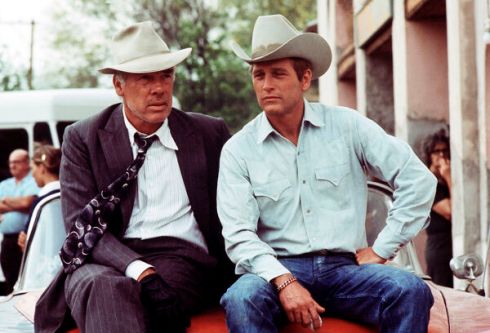
Actors Paul Newman and Lee Marvin in a publicity still for Stuart Rosenberg’s 1972 comedy western ‘Pocket Money’, Tucson, Arizona.
PRIME CUT (1972) Dir.: Michael Ritchie
Marvin and Gene Hackman as rival gang bosses, one from Chicago, one from Kansas City, who confront each other in Midwestern agricultural settings.
EMPEROR OF THE NORTH (1973) Dir.: Robert Aldrich
Depression-era saga about a boxcar-riding hobo, “A-Number One” (Marvin), and a brutal railroad guard, Shack (Ernest Borgnine), wielding a lethal hammer to try to keep Marvin and his down-and-out buddies from riding his train, leading to a smack-down, drag-out vicious battle-to-the-death aboard a moving train.
THE BIG RED ONE (1980) Dir.: Samuel Fuller
Fuller’s career-defining World War II epic spans North Africa, Italy, Normandy, and the death camps, all based on his own experiences as an infantryman. Marvin was a bit old (56) to be playing a combat sergeant, but it’s his last great role and Fuller had some nice things to say about working with Marvin in his autobiography, A Third Face:
“One of [producer] Gene Corman’s principal worries was Lee Marvin’s reputation as a hard drinker. Lee did get drunk a couple of times, but, for cryin’ out loud, he was carrying the entire picture on his shoulders! Lee’s infrequent binges never interfered with our tough shooting schedule. It was a dream come true to make a movie with an actor like Lee Marvin.”
I wrote about the film here and about Sam Fuller here.
DEATH HUNT (1981) Dir.: Peter R. Hunt
Lee Marvin goes on a manhunt in the Canadian wilderness after his DIRTY DOZEN co-star Charles Bronson.
I wrote about Charles Bronson here.
THE DIRTY DOZEN: THE NEXT MISSION (1985) Dir.: Andrew V. McLaglen
A made-for-TV sequel to THE DIRTY DOZEN, with Marvin, Ernest Borgnine and Richard Jaeckel reprising their roles, despite the fact that it takes place right after the earlier film but was made 18 years later! Well, at least they still had it in them.
THE DELTA FORCE (1986) Dir.: Menahem Golan
Marvin’s last film, in which he’s paired with martial arts star Chuck Norris in a rescue mission involving an Israeli airliner hijacked by Arab terrorists. Marvin looks his age (62) but still carries himself with extraordinary, rugged authority. Also featuring one of Marvin’s DIRTY DOZEN co-stars, George Kennedy.
Marvin’s reputation remains strong 37 years after his death. Among my pile of Marvin films to watch for his centennial is Stanley Kramer’s SHIP OF FOOLS (1965), which I’ve never seen before but look forward to and which pairs him with none other than Vivien Leigh!






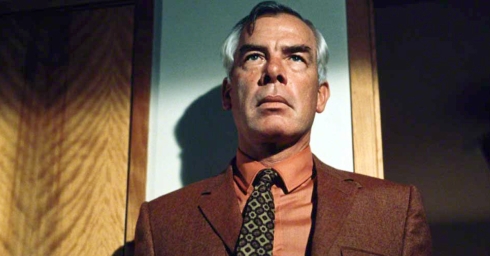

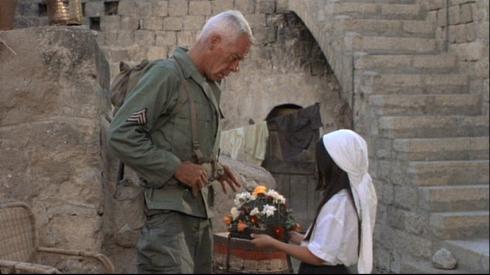





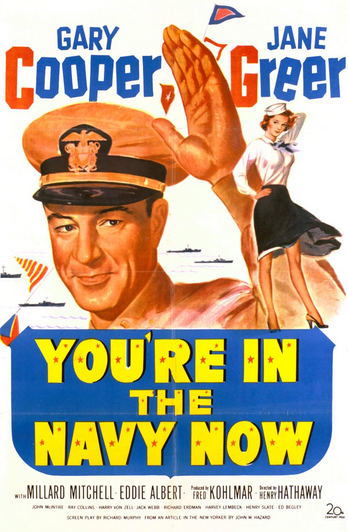



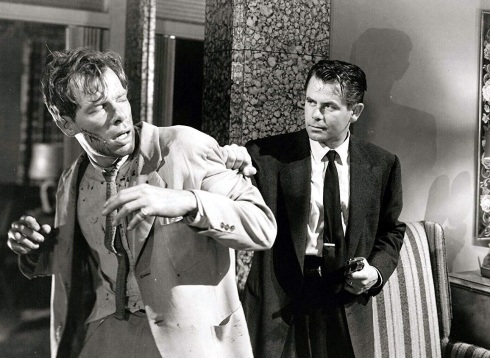



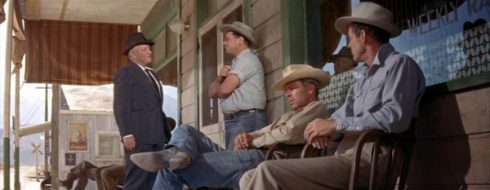


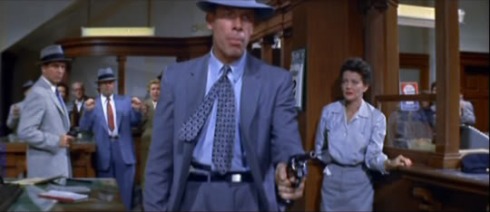


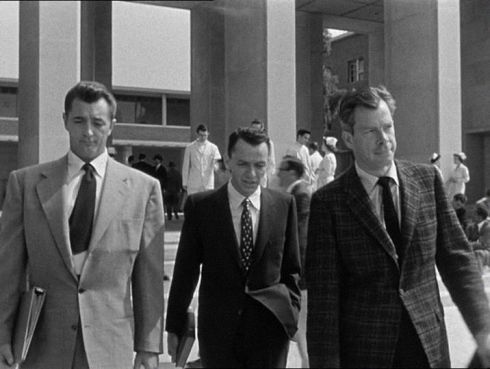



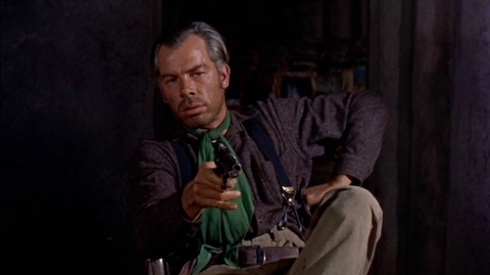
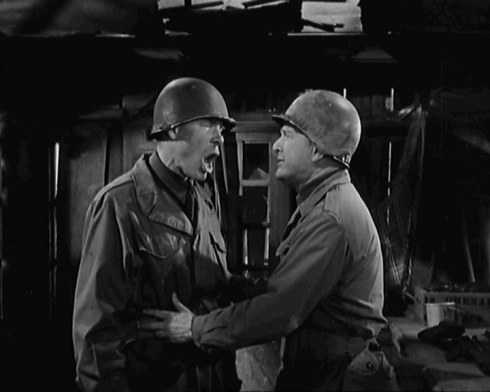
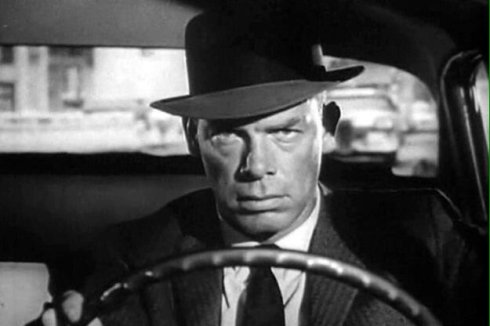

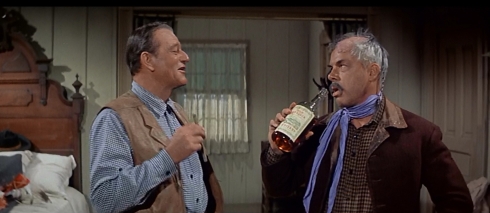






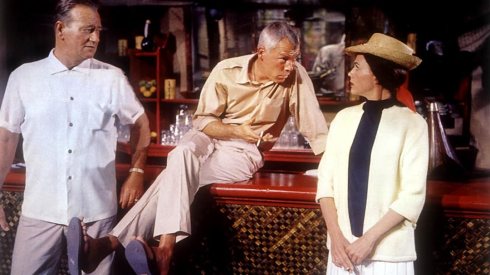







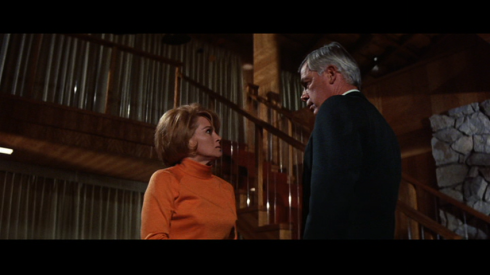




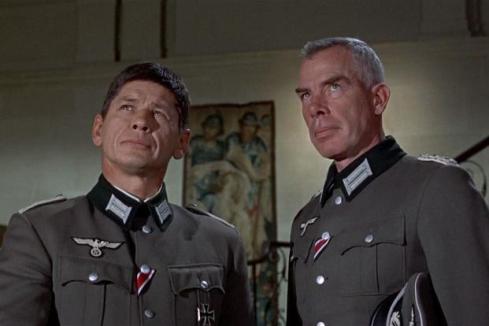



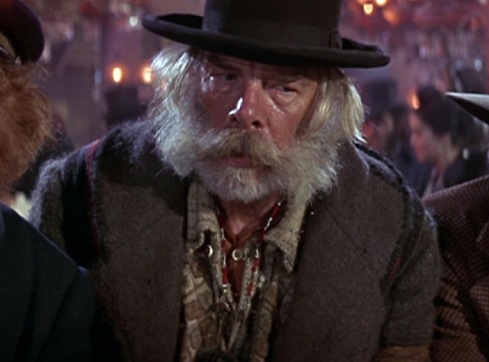


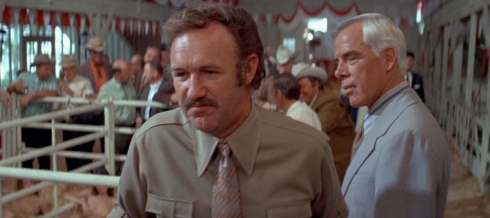




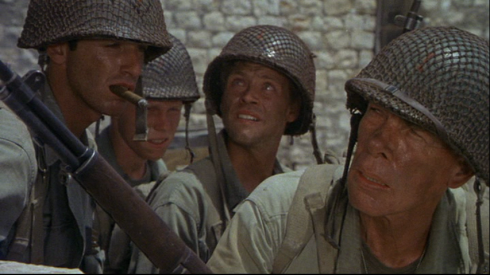






Just attended a screening of The Big Red One. An amazing film, and Marvin really carries it.